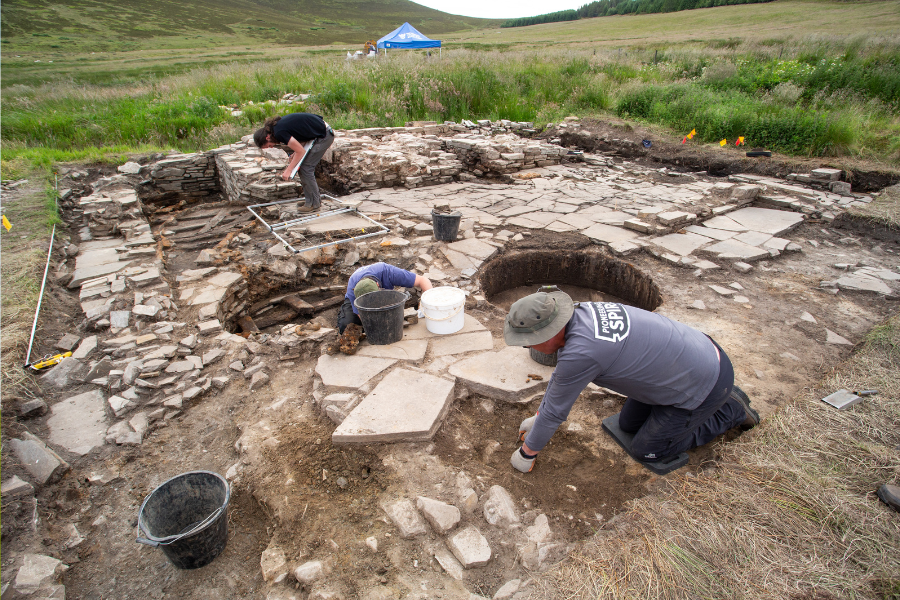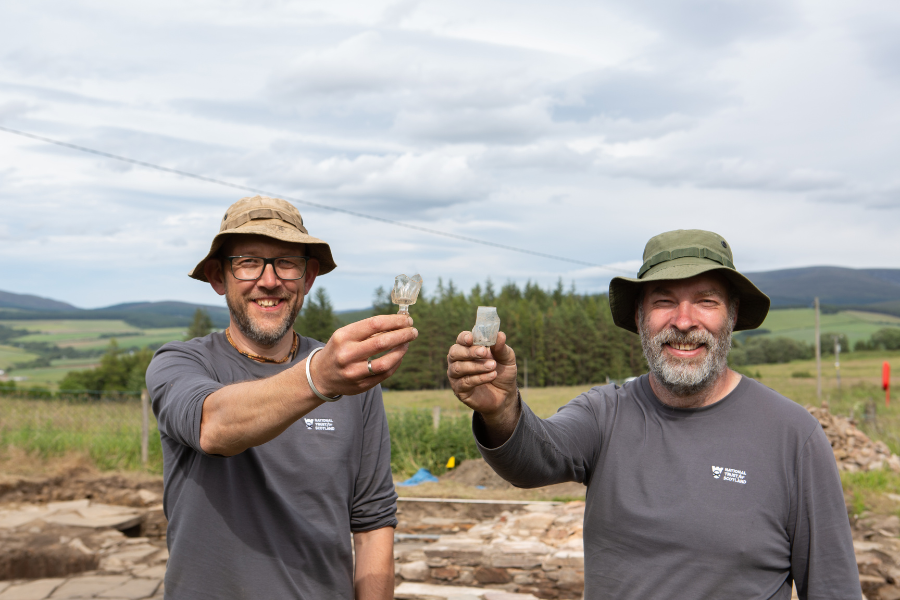
ARCHAEOLOGISTS working with The National Trust for Scotland have made new discoveries surrounding nineteenth century whisky production.
The dig took place at the old site of The Glenlivet distillery in Moray, who worked alongside the National Trust on the project.
The team investigated the site where The Glenlivet’s founder, George Smith, risked his life and liberty to become the first legal whisky distiller in the area.
Smith produced single malt whisky legally in a landscape of illicit distilling in Speyside in 1824.
The team was able to uncover three fire pits which would have been used for copper stills, timber lined vats and receivers.
The National Trust for Scotland’s head of archaeology Derek Alexander said: “Despite the site having been intentionally dismantled when the distillery was relocated in 1859, we have been surprised by the level of preservation of some of its structural elements.
“It is still possible to trace the main activities within the still house and there were even some wooden elements surviving that must be around 200 years old.”
The site was found to be well preserved, despite the fact that it would have been dismantled when the distillery was moved to its current location just further down the hill from the original site.
Alexander continued: “The old site at The Glenlivet forms a really nice crossover between the small-scale illicit whisky bothies hidden in the hills, through the medium-scale, farm-based level of production, to the large-scale factory facility, that characterises the Scottish whisky-making industry today.

“You can see where it has developed from a distillery and how it has expanded over time in order to increase output.”
The team also discovered a variety of other finds, including a George III silver shilling dating from around 1816-20, just before the 1823 Excise Act came into force.
The act sanctioned the distilling of whisky in return for a licence fee of £10.
Alexander continued: “We can see many elements of the legalised whisky production process here and many of the artefacts also provide an insight into the lives of the staff who lived and worked there.
“It’s a privilege to be allowed to work on the site, and with such a dedicated group of volunteers, with guidance from whisky industry experts.”
Newly appointed archivist for whisky company Chivas Brothers Robert Athol said: “I volunteered at the dig site this summer and it’s incredibly exciting collaborating with National Trust for Scotland as we continue to learn more about The Glenlivet’s history.
“Archaeological evidence found at the dig fills in the gaps we have in the documentary history where records have not survived or were not created.”







